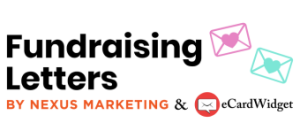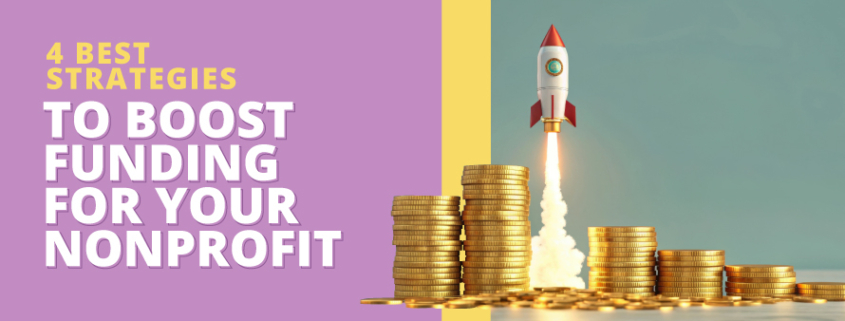4 Best Strategies to Boost Funding for Your Nonprofit
Nonprofits face constant pressure to raise funds to power their mission—a pressure that has only grown as the federal government slashes funding for these organizations. To stay afloat, mission-driven organizations must sharpen their existing fundraising strategies and introduce creative new ideas.
Your fundraising strategy should evolve as your nonprofit’s needs and abilities change. In this guide, we’ll discuss four innovative and effective strategies for boosting funding now and in the long term.
1. Diversify with Mission-Aligned Earned Income
The key to long-term sustainability for nonprofits is diversified revenue streams. You may decide to accept stock, gifts from donor-advised funds (DAFs), or crypto donations, but many nonprofits find the most success by launching mission-aligned business ventures that create revenue and community value.
Like businesses, nonprofits usually offer services or products to earn extra income.
Services
Depending on your nonprofit’s mission, exploring service-based ideas like educational workshops might make sense. Selling services can increase supporters’ awareness of your brand and cement your organization as a part of your local community. You can get creative with these events and connect them to your cause.
For example, Trees Atlanta is a nonprofit organization dedicated to protecting and expanding Atlanta’s tree canopy. It charges a fee for private walking tours with guides who can point out native wildlife and share the area’s history. These events educate the public about Trees Atlanta’s mission, provide something of value for the community, and generate additional revenue for the organization.
Products
Most commonly, nonprofits sell branded merchandise for extra income and to aid their marketing efforts. Apparel merch is particularly popular, as it allows supporters to wear their passion for your mission on their sleeve (literally!). Look for eco-friendly products to show that your organization seeks to do good at every level of its operations.
Your organization doesn’t have to stop at selling branded merchandise. An increasingly popular sustainable revenue option is a mission-aligned thrift store, which generates steady income while engaging your community in new ways. Host a capital campaign to get the necessary funding to open your storefront (whether digital or physical) and invest in important tools like a point of sale (POS) system. A dedicated thrift store POS system is the best option, as these solutions have features to meet specific thrift store needs.
For example, Lost-n-Found Youth is a nonprofit with a mission to support LGBTQ+ youth experiencing homelessness. In addition to its traditional fundraising efforts, Lost-n-Found operates a nonprofit thrift store, the proceeds of which go towards the Lost-n-Found mission.
Regardless of which option you choose, focus on mission alignment and select an idea that matches your audience’s needs and interests. Share with supporters how this new venture will help your cause and ask them what offerings they want to see from your organization.
2. Launch a Recurring Giving Program
A strong recurring donor base provides monthly financial stability and deepens donor relationships. Even small monthly gifts add up—CharityEngine reports that recurring donors give more annually, and donors who give regularly tend to stick around for longer.
Here are some tips to create and sustain a recurring gift program:
- Identify prospects. Donors who already make frequent gifts, longtime donors, and supporters who engage in multiple ways are your best bet for recurring donors. Comb through your donor database to identify donors who fall into these categories. Then, send these donors personalized fundraising letters to invite them to become a larger part of your mission.
- Brand your program. Name your recurring gift program to show these donors that you see their commitment and foster a sense of community. For example, charity:water calls their monthly donors “The Spring” and asks web visitors to join their program using community-focused language and impact statements: “Join the global community serving 37,413 people every month.”
- Make recurring giving easy. Many donors may be attracted to the idea of convenient, impactful giving, but they won’t always seek out your recurring giving program on their own. To make joining more convenient, allow donors to toggle between one-time and recurring gifts on the donation page. You can also add impact labels to your monthly giving levels; charity:water, for example, writes that a $20/monthly donation provides six people with clean water every year.
By creating and promoting a recurring gift program, you reduce your reliance on one-time gifts and secure consistent revenue for your nonprofit. Send consistent reminders to your donors to update their payment information as necessary, as an expired card can mean a lapsed donor.
3. Partner with Local Businesses
Strategic collaborations with local businesses are mutually beneficial; while your organization gains access to unprecedented funding, resources, and new supporters, local businesses generate goodwill and receive free advertising. Because of these benefits, there is potential to create long-term relationships that bolster your nonprofit’s stability.
Secure meaningful partnerships by:
- Emphasizing alignment: The businesses you partner with should have ethics that match your own, but your mission must also speak to their goals and values. Look at a potential partner’s website to research their values and the language they use to describe their business, then formulate an outreach message that shows how a partnership will benefit you both.
- Engaging on multiple levels: Your partnership doesn’t have to stop at sponsorships. Talk to your partners about hosting employee volunteer days to gain additional hands-on assistance. You also might seek in-kind donations for a charity raffle or auction. Or, if you have a nonprofit thrift store, you can accept in-kind donations to sell. ThriftCart lists dead stock as one of the best ways for a thrift store to add valuable items to its inventory while helping businesses get rid of items they no longer want.
Start by proposing a small project to test the fit of your two organizations. Then, keep the relationship going by showing your appreciation and how the partnership impacted both your organizations. You can even feature business donors in your newsletters or social media to show your gratitude.
4. Hone Your Grantseeking Strategy
It’s no secret that grants can be a powerful source of funding. The 2024 State of Grantseeking Report found that 91% of nonprofits surveyed submitted at least one grant application in the past year. To compete against all the other nonprofits throwing their hats in the ring, your nonprofit must approach grantseeking with focus and intention. Refine your approach to maximize your chances of winning funding and avoid wasting time on dead-end applications:
- Start with values alignment. Go beyond the funder’s basic eligibility criteria by researching their past grantees, strategic goals, and published reports to gauge how your mission fits into their broader vision. For example, if you’re seeking funding to launch a nonprofit thrift store that supports workforce development, focus on funders prioritizing economic mobility and community-based sustainability.
- Use a “modular” grant writing system. Build a bank of pre-written, mission-aligned content that you can mix and match across applications—such as your mission statement, key impact stats, or bios of program staff. This saves time while ensuring every proposal still feels personalized and high-quality.
- Track outcomes. Keep tabs on which proposals received funding, which were declined, and what feedback (if any) you received. Over time, patterns will emerge around which funders resonate with your work, what narratives land best, and how to evolve your approach.
With a focused grant-seeking strategy, you can do more than cross your fingers while waiting for a response and see real change in the outcomes of your grant applications.
Nonprofits cannot afford to become complacent; you must always innovate and reimagine to continue advancing your mission. These funding strategies allow you to make the most of limited resources to create stability for your organization and bring your community of supporters closer together. Experiment with what strategies work best for your nonprofit’s resources, goals, and audience, and follow the most promising path forward.




